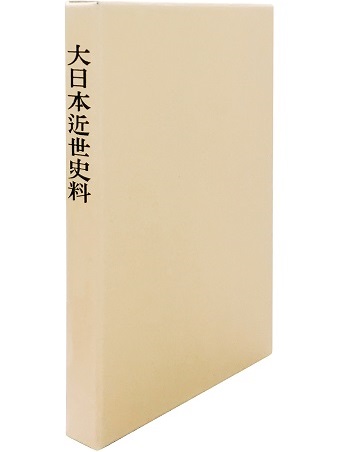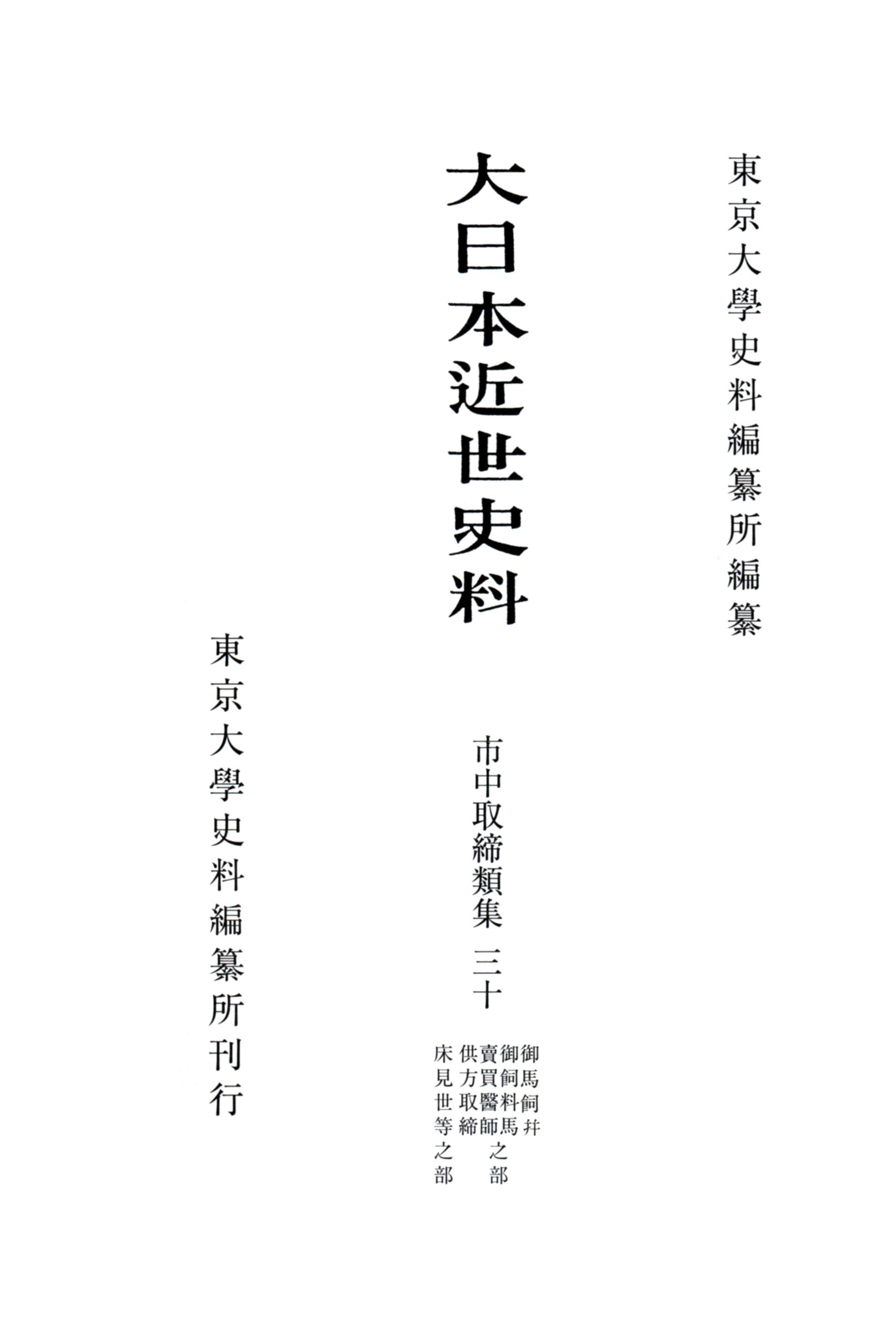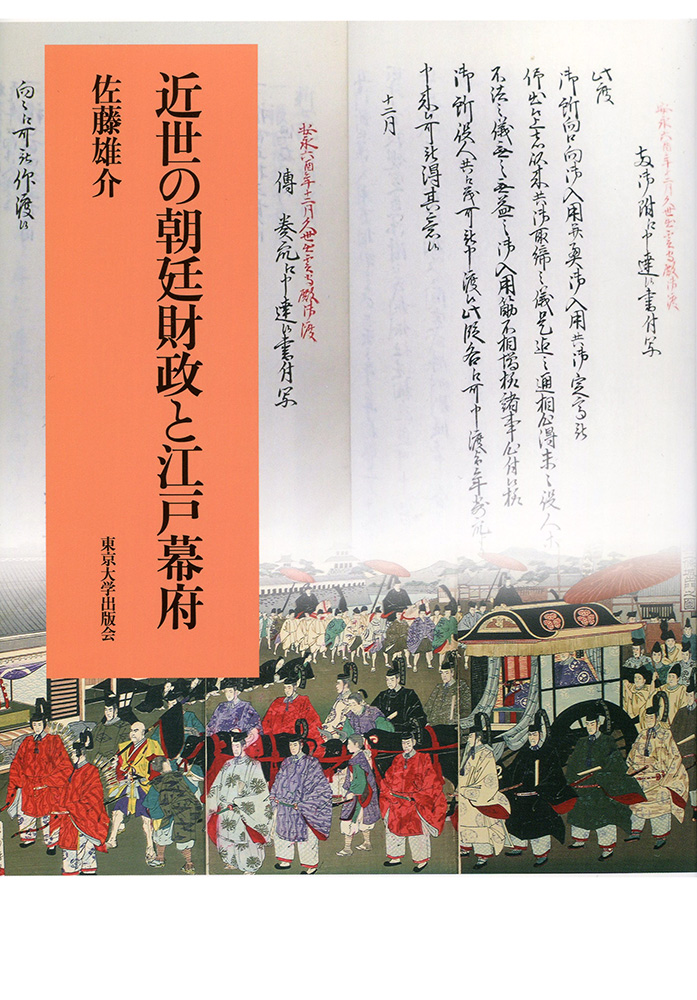
Title
Early Modern Historical Materials of Japan Hirohashi Kanetane Koubu Goyo Nikki 13 (Hirohashi Kanetane’s Diary of Official Business between the Court and Shogunate, Vol. 13)
Size
368 pages, A5 format
Language
Japanese
Released
April 23, 2018
ISBN
978-4-13-093053-6
Published by
University of Tokyo Press
Book Info
See Book Availability at Library
Japanese Page
Early Modern Historical Materials of Japan is a series that reprints and edits basic historical sources for the study of early modern Japanese history. Hirohashi Kanetane’s Diary of Official Business between the Court and Shogunate, included in this series, is a diary recorded by the court noble Hirohashi Kanetane (1715–81) in the middle of the Edo period in his capacity as an official in charge of communications between the imperial court and the shogunate (buke tensō). He held this position for many years, from 1750 to 1776, and kept this diary for twenty-seven years, from the time of his appointment until two months after his retirement.
During the Edo period two court nobles were selected to serve concurrently as official intermediaries between the court and the shogunate, and a total of fifty-seven men held this position until the end of the shogunate. They received a stipend from the shogunate, and as well as conveying the court’s wishes to the shogunate, they liaised with the shogunate’s representative in Kyoto and conveyed the shogunate’s wishes to the imperial court. Together with the regent, they were responsible for internal superintendence of the court. Consequently, the official diaries of these intermediaries between the court and the shogunate serve as a basic source for studying relations between the court and the shogunate during the Edo period and the nature of court society and the society of court nobles. The middle of the Edo period, when Kanetane held this position, has been considered to have been a period when relations between the court and the shogunate were quite stable, unlike the early Edo period, when the emperor and imperial court were brought under the control of the shogunate, and the final years of the shogunate, when the emperor and imperial court emerged into the political spotlight. But through the publication of Kanetane’s diary it has become clear that this was a time when the order within the imperial court that had been built up by the shogunate in the first half of the Edo period was beginning to relax and waver and the preconditions for the political circumstances of the final years of the shogunate were being prepared. Kanetane’s diary is a body of source material that has provided the occasion for scholarly interest to be taken in court-shogunate relations not only in the early Edo period and the final years of the shogunate, but also in the mid-Edo period, thereby leading to new developments in research. It is in fact Kanetane’s diary (vols. 7–10) that provides a detailed account of the Hōreki incident, which is also taken up in high school textbooks.
During Kanetane’s tenure Go-Sakuramachi, the last empress regnant to date, succeeded to the throne in the seventh month of 1762. Her younger brother, the emperor Momozono, had died suddenly at the age of twenty-two, and because his successor (the subsequent emperor Go-Momozono), who was her nephew, was only five years old, it was decided that she would occupy the throne in the interim. The previous volume of Kanetane’s diary records details of decisions made by leading members of the imperial court and their negotiations with the shogunate on this occasion, and the present volume continues with an abundance of entries about court-shogunate negotiations relating to preparations for the enthronement ceremony, change in era name, and Great Food Offering Ritual. About ten years ago there was discussion of the possibility of a woman succeeding to the throne in the future because of the declining size of the imperial family, and in 2019 a new emperor will be installed, the era name will be changed, and an enthronement ceremony and Great Food Offering Ritual will be performed. The entries relating to the change in emperor in this volume and the previous volume of Kanetane’s diary provide ideal material for considering the nature of the emperor and the imperial household in the present day.
(Written by MATSUZAWA Yoshiyuki, Associate Professor, Historiographical Institute / 2018)



 Find a book
Find a book



